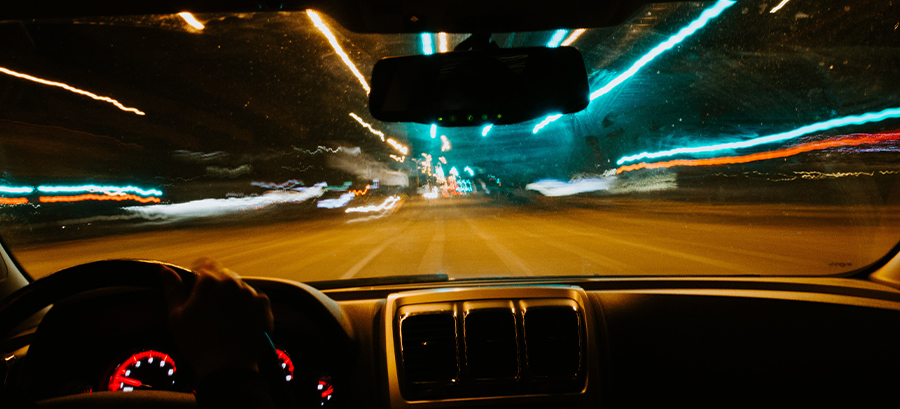This week I just finished recording the second season of the One-Degree Shift Podcast (subscribe on Spotify or Apple, if interested). The focus of the show has always been and is still to help leaders like you build a better place to work. And while all of my guests shared a unique and interesting perspective, nearly everyone shared the importance of reflection and experimentation. There is no playbook for the future and there is no best practice for a future we have yet to create. We are blind, driving into the future at the speed of time.
This made me think about a trip I took last week.
Last week my partner and I were on a 10-hour drive, half of which was in complete darkness. Where we live, there are more animals than we could possibly count and winter roads aside, they are our biggest danger when driving. Despite the speed limit being 100km/h (60m/h), when driving in the dark, our vision is only as good as the headlights and seeing too far into the distance just isn’t possible. Out of the blue (well, black), a deer, elk, or moose could jump out at any minute causing me to either slam on the breaks or swerve to miss it.
This had me thinking about the future and how we move forward. While we’ve all heard that time flies when we’re having fun, we all know that time passes at a constant speed whether we like it or not. And driving at night has me thinking about the lack of our ability to see what has yet to come. Much like on the highway on our drive, we’re moving with the hope and expectation that nothing will happen, but are still ready to pivot or brake when something does.
What the fantastic guests on the podcast often share with me is that we have to keep looking up and making sure we’re on the same track. We have to make sure that what we were doing yesterday is still today’s best practice too, and that we’re not falling too far off-track. And while we might not think of it, driving (especially at night) is abnormally exhausting because we’re looking for the things we cant see. What might jump up from the ditch? Is the road slippery? Is there oncoming traffic? We’re doing all the things these great organizations are doing and we don’t even notice.
If there is one thing I’m sure about, it is that there isn’t a manual or guide for an event or a culture that has yet to be created. For those of you that are leading great teams and looking to build an even more incredible experience, remember that unless we keep measuring our success and ensuring we’re keeping everything between the lines, that we’ll fall off track and we’ll lose speed. And if we fail to see our competition (or, a deer) coming from out of left field, who knows how bad it could get if we don’t pivot on the spot and make a change.
Questions to ponder:
- What is your most recent experiment?
- How far ahead are you planning?
- What is your reflection process?
- Are you able to pivot on-the-fly?
More posts
Given the Pandemic, There is Currently Something More Important Than Our Company ‘Why’
Over the past months, the pandemic has dominated the headlines. Greta Thunberg and the acute…
Most of us can vividly recall the nervous feeling right before our teachers would take…
More Than Just an Office: The Potential of the Workplace of Today
“I just want things to go back to normal.” Perhaps you have either heard or…



